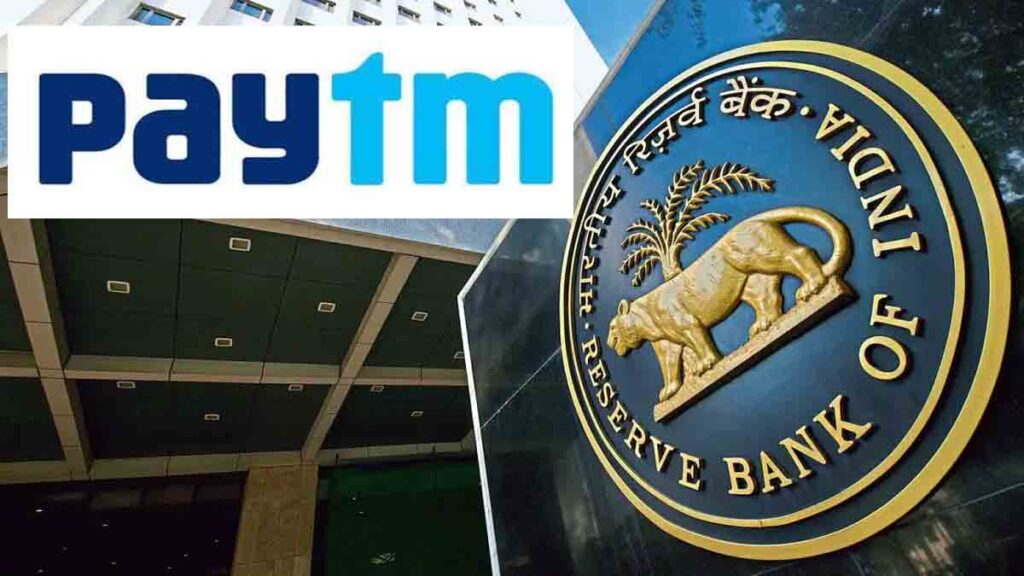In a new turn of events, Indian installments firm Paytm has encountered a remarkable 5% flood in its portions following the Reserve Bank of India’s (RBI) choice to expand the cutoff time for its financial arm to stop tolerating new stores. This essential move by the organization and its association with Pivot Bank to support well-known items has gathered consideration from examiners and financial backers. We are discussing Paytm‘s Shares Rise 5% as RBI Extends Deadline Amid Banking Transition.

We are discussing Paytm’s Shares Rise 5% as RBI Extends Deadline Amid Banking Transition:
Experts at Bernstein see the RBI’s expansion of the cutoff time as an essential consideration in working with smooth progress for the exchange of records. This choice is critical as Paytm explores the difficulties related to the financial change. The organization’s proactive measures and key associations have been instrumental in keeping up with financial backer certainty.
Paytm‘s coordinated effort with Pivot Bank holds importance in guaranteeing the congruity of its well-known items. The association shields existing contributions and positions Paytm well for future coordinated efforts. Examiners at Bernstein view such organizations as “huge up-sides for continuous business,” accentuating the significance of these coalitions in the organization’s general development procedure.
Despite the positive turns of events, Bernstein keeps up with its “Sell” rating on Paytm‘s stock, joined by a 550 rupees cost target. This moderate position could be credited to different elements, including market elements, contests, and potential difficulties related to continuous change. Significant Paytm’s stock now conveys five “Sell” “Areas of strength for or” suggestions, denoting the most elevated include in a year.
The stock’s presentation and the blended proposals mirror the intricacy of the monetary scene in which Paytm works. While the 5% ascent in shares demonstrates positive financial backer opinion because of the RBI’s cutoff time augmentation, the careful methodology from examiners proposes that difficulties and vulnerabilities persevere.
As Paytm explores this temporary period, one can’t disregard the more extensive ramifications for the fintech business in India. The advancing administrative scene and the organization’s reaction to these progressions will probably start trends for different players on the lookout. Paytm’s quest for extra organizations becomes essential in this unique situation, flagging a versatile way to deal with the developing monetary environment.
All in all, Paytm’s new 5% ascent in shares following the RBI’s cutoff time augmentation highlights the powerful idea of the monetary business. The organization’s joint effort with Hub Bank and its quest for vital associations position it decisively on the lookout. In any case, the mindful standpoint of experts helps us remember the difficulties intrinsic to the advancing monetary scene. As Paytm proceeds with its financial change, partners will intently screen its essential moves and organizations, expecting the effect on the organization’s drawn-out development and the more extensive fintech area in India.
Conclusion
The extension of the deadline for Paytm’s banking transition by the Reserve Bank of India (RBI) has been well received by the market, as evidenced by the 5% rise in its shares. This additional time granted by the RBI will allow Paytm to navigate the complex transition process to a small finance bank more effectively, ensuring a smoother and more successful transition. It also demonstrates the RBI’s confidence in Paytm’s ability to meet regulatory requirements and bolster its banking operations. Paytm’s resilient growth strategy and continuous efforts to enhance its services position it well for future success in the competitive banking sector.
The move also reflects RBI’s confidence in Paytm’s ability to meet regulatory requirements and strengthen its banking operations. Paytm’s resilient growth strategy and continuous efforts to enhance its services position it well for future success in the competitive banking sector.
My experience is in interactive, digital and social media marketing techniques, strategies and tools in marketing, public relations, and media relations.
